 | |
| Formerly |
|
|---|---|
| Company type | Subsidiary |
| Industry | Commercial vehicles |
| Founded | 1893; 132 years ago (1893) |
| Headquarters | Munich, Bavaria, Germany |
| Key people | Alexander Vlaskamp (CEO) |
| Products | Trucks and buses; Diesel- and natural-gas engines |
| Revenue | 10,900,000,000 Euro (2021) |
| Parent | Traton |
| Divisions | MAN Neoplan |
| Website | mantruckandbus.com |

MAN Truck & Bus SE (formerly MAN Nutzfahrzeuge AG, pronounced [em.aː.en ˈnʊtsˌfaːɐ̯tsɔʏɡə ʔaːˈɡeː]) is a subsidiary of Traton, and one of the leading international providers of commercial vehicles. Headquartered in Munich, Germany, MAN Truck & Bus produces vans in the range from 3.0 to 5.5 t gvw, trucks in the range from 7.49 to 44 t gvw, heavy goods vehicles up to 250 t road train gvw, bus-chassis, coaches, interurban coaches, and city buses. MAN Truck & Bus also produces diesel and natural-gas engines. The MAN acronym originally stood for Maschinenfabrik Augsburg-Nürnberg AG (pronounced [maˈʃiːnənfaˌbʁiːk ˈʔaʊksbʊʁk ˈnʏʁnbɛʁk; -faˌbʁɪk-]), formerly MAN AG.
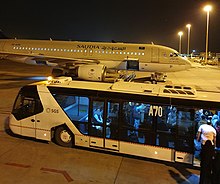
Trucks and buses of the product brand MAN and buses of the product brand Neoplan (premium coaches) belong to the MAN Truck & Bus Group.
On 1 January 2011, MAN Nutzfahrzeuge (literally: commercial vehicles) was renamed as MAN Truck & Bus to better reflect the company's products on the international market.
History



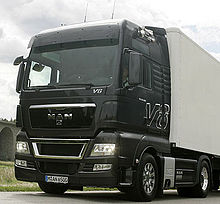
 360° panorama: MTB at Dachauer Straße in Munich
360° panorama: MTB at Dachauer Straße in Munich
Light truck collaborations with Saviem and Volkswagen
In 1897, MAN presented the first self-ignition fully functioning diesel engine, in partnership with its inventor, Rudolf Diesel. From 1967 until 1977, MAN collaborated with France's Saviem, selling their light to medium duty trucks with MAN badging in Germany and certain other markets. After the end of this, a deal was struck with Volkswagen which lasted until 1993. Production of a truck using the Volkswagen LT body started in 1979 and ended in 1993 with 72,000 units produced. It was available with four engines and four wheelbases over its lifetime; there was also a 4X4 version called 8.150 FAE. FAE means "forward control" cab, all-wheel drive, single tyres so the F nomenclature means "forward control" cab. This series is usually referred to as the G90, from the most common model, but also as the "G"-series. In the United Kingdom it was originally marketed as the "MAN MT" series. The original lineup in the UK consisted of the 6.90 and the 8.90 (the first digit denoting the GVW in tonnes, the second for power in metric horsepower) and the 8.136 and 9.136.
MAN AG supplied engines which were available in inline-four and inline-six cylinder engine configurations, with DIN rated motive power outputs of:
- 67 kilowatts (91 PS; 90 bhp)
- 75 kilowatts (102 PS; 101 bhp)
- 101 kilowatts (137 PS; 135 bhp)
- 112 kilowatts (152 PS; 150 bhp)
MAN replaced the G series with the L2000 and M2000 ranges. Several models of the MAN-VWCV and the VWCV LT ranges were marketed in Spain by Enasa as Pegaso Ekus, in a typical badge engineering operation. Peterbilt also offered this model with their badging, as the 200 or 265 model.
VWCV and MAN shared the project development in accordance with the collaboration agreement as follows:
Volkswagen Commercial Vehicles took care of:
- the tilting driver's cab including steering wheel and fixing, hand levers and foot pedals, cabins so they can fit the truck chassis
- the complete interior equipment and heating
- the manual gearbox with clutch and gear lever, the rear axle with rear-axle transmission and suspension
- the Cardan shafts including bearings
- the electrical system for the entire concept, and the platforms for the standard design.
MAN was responsible for:
- the engine including cooling, exhaust, inlet and fuel system
- the front axle with suspension and steering
- the frame with all parts for attaching the springs and axles, the steering, the batteries, the power braking system and fuel system
- the brakes, i.e. for the complete wheel brakes front and rear, the dual-circuit power brakes and parking brake
- the wheels and tyres
- the platform for special designs and tipping mechanism.
MAN-VWCVs were built in Volkswagen's Hanover factory until other Volkswagen models took priority; they were then made at MAN AG's Salzgitter-Watenstedt factory.
MAN-VWCV Range 6.90, 8.90, 6.100, 8.136, 8.100, 8.150, 9.136, 9.150 & 10.136.
- The VW LT Mk 1 cabin was used for the MAN-VW range, the cabins are wider than the standard LT
- F & FAE are sometimes on the end of some of these model numbers.
Trucks
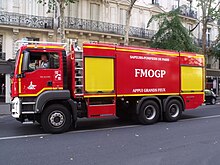
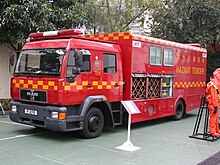

Commercial trucks
- LE / L2000
- ME / M2000 evolution
- FE / F2000
- CLA
- TGL, with hybrid trucks (MAN TGL Optistrang and TGL EDA).
- TGM
- TGA
- TGX / TGS – a variant of the TGS model was used for Dakar Rally
- MAN TGE - A rebadged Volkswagen Crafter.
Until 2007, MAN also built the badge-engineered ERF trucks for the UK market.
Military trucks
Rheinmetall MAN Military Vehicles, a joint venture with Rheinmetall, produces a range of tactical trucks:
Earlier ventures with US Army produced the "LD" multifuel diesel engine line used on M35 2+1⁄2-ton and M54 5-ton trucks
Buses
See also: Neoman Bus
Current
- Lion's City, city and inter-urban buses
- Lion's Coach, coaches
- Lion's Intercity, inter-urban buses
- Lion's Explorer
Historical

- The first integral buses
- 760 UO, underfloor engine (1957–?)
- MAN/Krauss-Maffei Metrobus (de)
- 640 HO (1959–1962)
- 750 HO (1962–1974)
- 890 UO, underfloor engine
- 890 UG, articulated bus, underfloor engine
- 535 HO, regional bus and coach
- VöV-Standard buses, 1st generation

- 750 HO-SL (renamed SL 192 from 1972), city bus (1968–1973)
- 750 HO-SÜ (renamed SÜ 230 from 1972), regional bus (1970–1975)
- 890 SG (renamed SG 192 from 1972), articulated bus, underfloor engine (1970–1980)
- SL 200, city bus (1973–1988)
- SÜ 240, regional bus (1972–1989)
- SD 200, double-decker bus (1973–1985)
- SG 220, articulated bus, underfloor engine (1978–1983)
- SG 240/280 H, articulated bus, rear engine (1980–1986)
- North-American models:
- SG 220, articulated bus, underfloor engine (1978–1983)
- SG 310, articulated bus, underfloor engine (1981–1988)
- VöV-Standard buses, 2nd generation

- SL 202, city bus (1984–1993)
- SG 242/282 H, "puller" articulated bus (1985–1990)
- SG 242/262/292/312/322, "pusher" articulated bus (1986–1999)
- SD 202, double-decker bus (1986–1992)
- SÜ 242/272/292/312/322, regional bus (1987–1998)
- SM 152/182, midibus (1989–1992)
- NL 202, low-floor bus with podium-mounted seats (1989–1992)
- NG 272, low-floor articulated bus with podium-mounted seats (1990–1992)
- NM 152/182, low-floor midibus with podium-mounted seats (1990–1993)
- NL 202/222/262/312, low-floor bus with podium-mounted seats in rear part only (1992–1998)
- MAN NL 262 R, right-hand drive version for Hong Kong (1997–1999)
- NG 262/272/312, low-floor articulated bus with podium-mounted seats in rear part only (1992–2000)
- NM 152/192, low-floor midibus with podium-mounted seats in rear part only (1993–1998)
- ND 202, low-floor double-decker bus (1995)
- EL 202/222/262/272, low-entry bus (1993–2001)
- North-American models:
- SL 40-102 "Americana", transit bus (1984–1988)
- Post-VöV-Standard buses

- 1st generation Lion's City city- / inter-urban buses (1996–2004)
- NÜ 223/233/263/283/313, low-floor inter-urban bus (1996–2004)
- NÜ 313/353-15, 14.7-metre version (1998–2004)
- NL 223/233/243/263/283/313, low-floor city bus (1997–2004) (also known as Lion's Line)
- NL 313/353-15, 14.7-metre version (1999–2004) (also known as Lion's Line XXL)
- NM 223/283, low-floor midibus (1997–2004) (also known as Lion's Midi and Lion's Single)
- NG 223/243/263/313/353/363, low-floor articulated bus (1997–2004)
- EL 223/263/283/293, low-entry bus (2003–2008) (also known as Lion's City T and Lion's City TÜ)
- NÜ 223/233/263/283/313, low-floor inter-urban bus (1996–2004)
- Lion's Classic city- / inter-urban buses (1999–2010) (unnamed until 2004)

MAN NG 313 with a Castrosua CS 40 body (MAN NG 313 F). Barcelona, Spain - SG 263/313, articulated bus (2001–2008) (also known as Lion's Classic G from 2004)
- SL 223/263/283 (2000–2010) (also known as Lion's Classic from 2004)
- SÜ 283/313 (1999–2009) (also known as Lion's Compact, as Lion's Classic Ü from 2004)
- Regional buses

- RÜ 240/280 (1980–1988)
- ÜL 242/272/292/312/322 (1990–1996)
- ÜM 192/222, midibus
- ÜL 313/353/363 (1996–2004)
- R 353/363 Lion's Comfort
- Lion's Regio (2004–2017)
- Coaches
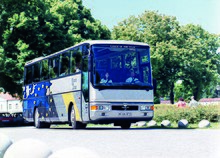
- SR 240/280 (1975–1984)
- SR 240/280 H, high-decker version (1978–1984)
- SR 321/361 (?–?)
- SR 321/361 H, high-decker version (?–?)
- SR 292/362 (renamed FR 292/362 from 1990) (1985–1993)
- SR 292/362 H (renamed FRH 292/362 from 1990), high-decker version (1985–1993)
- Lion's Star (1991–2006, replaced by Lion's Coach Supreme)
- FRH 422/402 (1991–1998)
- RH 403/463 (1998–2001)
- RHS 414/464/484 (2001–2006)
- 1st generation Lion's Coach: RH 353/363/403/413/423/463 (1996–2003)
Philippine Model
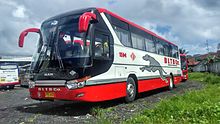
- DM14
Chassis
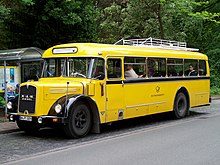

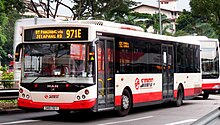

- MKN (1948–1950)
- MKN 26 (1950–1954)
- MKN 630 (1954–1956)
- MKH 2
- MKH 4
- 530 HOC (1955–?)
- 535 HOC (1956–?)
- 545 HOC
- 558 HOC (1956–?)
- 420 HOC (1957–1963)
- 10.xxx FOCL (L53) front-engined midi
- 10.xxx HOCL (469) midi
- 11.xxx HOCL midi
- 12.xxx HOCL-NL (A76) low-floor midi
- 12.xxx HOCL (A77) midi
- 13.xxx HOCL/SR (A53) midi
- 14.xxx HOCL-NL (A66) low-entry
- 14.xxx HOCL (A67)
- 16.xxx HOCL (470/475)
- 18.2x0 HOCL-NL (A69) low-entry
- 18.xxx HOCL (A51/A55/A91/R33/RR2/RR3 (chassis in box))
- 19.xxx HOCL (R33)
- 24.xxx HOCLN (474/A54/R37/R40 (chassis in box))
- 24.xxx HOCLNR-NL (A57/A59)
- 28.xxx HGOCL (A61)
- EL 202 F (A17) low-entry
- ND 202 F (A14) low-floor double-decker
- NL 202 F (898/A29) low-floor
- ND xx3 F (A34/A48/A95) low-floor double-decker
- NG xx3 F (A24) articulated low-floor
- NL xx3 F (A22) low-floor
- NM xx3 F (A35) low-floor midi
- SL 18.xxx HOC (A89)
- SÜ xx3 F (A91)
- Lion's Chassis low-entry, intercity and coach (modular)
Production sites
Trucks
Heavy range
- Munich (GER)
- Niepołomice (POL)
Light and medium range
Special-purpose vehicles
- Vienna (A)
Buses
- Ankara (TUR): MANAŞ - premium coaches, standard coaches, double-decker coaches, intercity buses, city buses for MAN & Neoplan
- Sady (POL) - moved to Starachowice
- Starachowice (POL) - city buses, bus and coach chassis, components ( in future: premium coaches, standard coaches, double-decker coaches, intercity buses)
- Carmona (PH) - bus bodies built by Almazora Motors Corporation
- Santa Rosa (PH) - bus bodies built by Santarosa Motor Works, Inc. (Columbian Manufacturing Corp.)
- Quezon City (PH) - bus bodies built by Del Monte Motor Works, Inc.
Engines
- Nuremberg (GER)
Axles and other components
- Munich (GER)
- Salzgitter (GER)
Official MAN Truck and Bus importer
Ghana – Van Vliet Automotive Distribution B.V
Togo – Van Vliet Automotive Distribution B.V.
Benin – Van Vliet Automotive Distribution B.V.
Nigeria – DEAL REAL Limited (DRL)
Burkina Faso – Van Vliet Automotive Distribution B.V.
Australia & New Zealand - Penske Australia & New Zealand
CKD-locations
- Shushary, Saint Petersburg, (RUS): Heavy-weight trucks. 50/50 Joint venture with Scania called Truck Production RUS LLC.
- Pinetown (RSA): heavy, medium and light trucks; bus-chassis for MAN & VW Truck & Bus
- Querétaro (MEX)
- Olifantsfontein (RSA): intercity- and regular service bus bodies for MAN & VW Truck & Bus
- Sharjah, (UAE): Assembling of trucks under the Shacman brand. The company is a part of the Shaanxi Automobile Group.
- East Jakarta, (IDN): Assembling of trucks and buses at a plant in Jatinegara, East Jakarta by PT. Duta Putera Sumatera.
- Shah Alam, (MYS): Assembling of Trucks and Buses
- Quezon City, (PHL): Assembling of Man and Volkswagen trucks and buses at MAN Truck and Bus Center assembly plant in Novaliches, Quezon City by MAN Automotive Concessionaires Corporation.
- Bangkok, (THA): Assembling of trucks and buses in Thailand by MAN Commercial Vehicle (Thailand) Co., Ltd.
- Samarkand, (UZB): Assembling of two trucks in Uzbekistan by MAN Auto-Uzbekistan.
See also
References
- "MAN Nutzfahrzeuge website: general information". Archived from the original on 2011-11-30. Retrieved 2010-07-31.
- "MAN Nutzfahrzeuge website: brands". Archived from the original on 2011-06-27. Retrieved 2010-07-31.
- MAN website (German)
- MAN Nutzfahrzeuge AG to become MAN Truck & Bus AG
- "The History of MAN".
- Kennett, Pat, ed. (June 1980). "MAN MT advertisement". TRUCK. London, UK: FF Publishing Ltd: 22–23.
- "Übersicht Bustypen MAN" [Overview bustypes MAN] (in German). Dieters Straßenbahn/Bus Seiten. Retrieved 12 December 2017.
- "MAN 750 HO Metrobus" (in German). Omnibusarchiv. 17 August 2010. Retrieved 16 December 2017.
- "MAN MKN" (in German). Omnibusarchiv. 17 August 2012. Retrieved 16 December 2017.
- "MAN 420 HOC 1 und HOC 2" (in German). Omnibusarchiv. 17 August 2010. Retrieved 16 December 2017.
- ^ Annual report 2009, page 9
External links
| MAN Truck & Bus | |
|---|---|
| Subsidiaries | |
| Products | |
| MAN SE | |
|---|---|
| Subsidiaries | |
| Joint ventures |
|
| Former subsidiaries | |